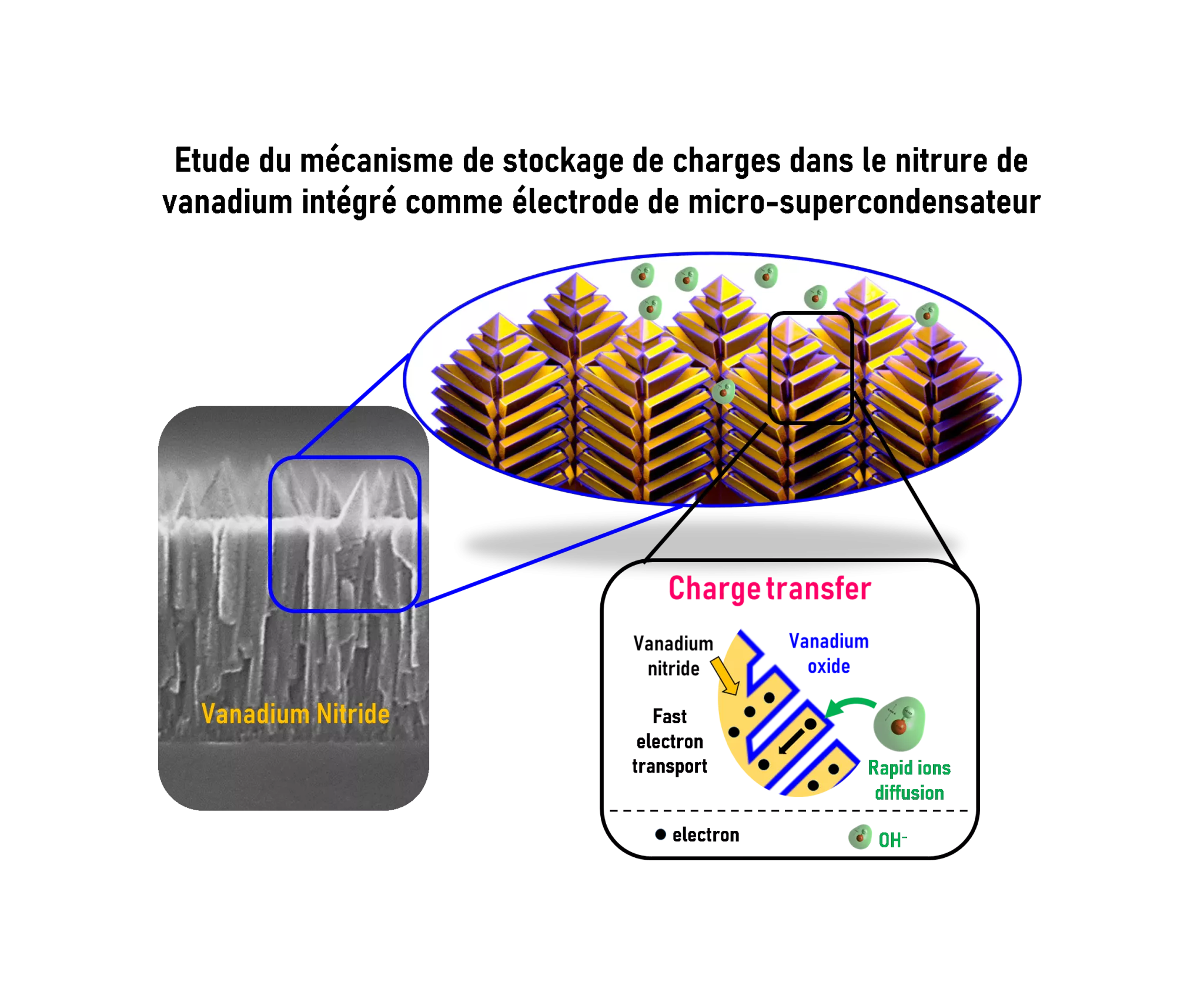Micro-supercapacitors to power on the Internet of Things
This publication was the subject of a communication from INSIS (in French).
The Internet of Things (IoT) is one of the revolutionary technologies of the 21st century. Its aim is to create an ecosystem of things or connected sensors in order to improve our daily lives in various fields such as health, the environment or transport. The miniaturization of IoT will reduce the size of energy storage sources. These sources will be the size of a grain of rice. The power supply of these mobile micro-devices will soon become a technical challenge and small and efficient energy storage sources will be necessary to guarantee their autonomy.
In this context, the design of efficient miniaturized batteries or supercapacitors (called micro-batteries or micro-supercapacitors) is the key to break this scientific deadlock. One of the objectives is to allow production on an industrial-scale of these devices, while using techniques and methods already used in the area of microelectronic.
Proof of the importance of this field of research, the CNRS has decided to select it as one of its priority thematic orientations.
A team of French researchers led by the Institut d’Electronique, de Microélectronique et de Nanotechnologies (IEMN) developed and demonstrated the functioning of high-performance micro-supercapacitors based on pseudocapacitive vanadium nitride thick films. Their results were published in Energy & Environmental Science journal.
From laboratory scale to industrial scale
Synthetized by cathode ray magnetron sputtering – a very common technic in the area of microelectronics – vanadium nitride presents high surface and volume capacities, respectively 1.2 F.cm-2 and more than 700 F.cm-3 (~ 4 times the volume capacity of a porous carbon electrode), and retains more than 80% of the initial capacitance for 50 000 cycles. The excellent electrical and electrochemical properties of vanadium nitride led the researchers to study in depth this bifunctionnal material and its charge storage mechanism. This study was carried out using a wide range of characterization methods made possible by collaborations with different French laboratories (Unité de Catalyse et de Chimie du Solide (UCCS), Institut des Matériaux de Nantes (IMN), Chevreul federation and Soleil synchrotron). Most of them are part of RS2E, the French initiative on energy storage.

Diagram 1 : Study of the charge storage mechanism in vanadium nitride integrated as an electrode for micro-supercapacitors
The making of these high-performance pseudocapacitive micro-supercapacitors can be done on an industrial scale because it is compatible with the deposit methods used in microelectronic. The work of researchers allows us to better understand the charge storage mechanism involved in these micro-supercapacitors. The experimenter will be able to modulate the deposit parameters of the vanadium nitride films to maximize the performances of the micro-supercapacitors thus produced.
Significant pseudocapacitive properties and ease of large-scale production. Vanadium nitride films have all the qualities required to pave the way for mass production of energy storage micro-devices capable of powering the Internet of Things of tomorrow.
References:
Novel insights into the charge storage mechanism in pseudocapacitive vanadium nitride thick films for high-performance on-chip micro-supercapacitors
Kevin Robert et al.
Energy & Environmental Science, 05/03/20, DOI : 10.1039/C9EE03787J
Contacts : Christophe Lethien, christophe.lethien@univ-lille.fr / Thierry Brousse, thierry.brousse@univ-nantes.fr